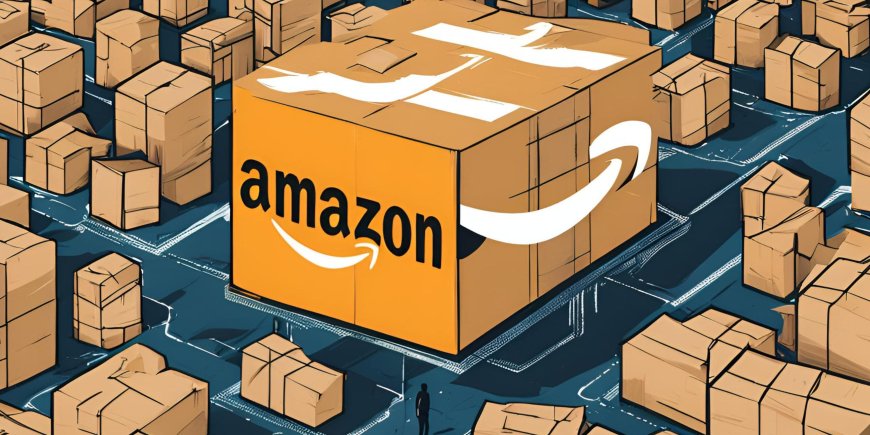Amazon's $15 Billion Investment Boost: Accelerating Growth and Innovation in India
Amazon commits to investing an additional $15 billion in India by 2030, bringing total investments to $26 billion. Explore the strategic moves, challenges, and future outlook in Amazon's ambitious growth plan.

Amazon's journey in India has been marked by ambitious growth strategies, significant investments, and a vision to become a dominant player in one of the world's fastest-growing markets. Recently, Amazon announced a monumental decision to invest an additional $15 billion in India by 2030. This new investment brings Amazon's total commitment in India to a staggering $26 billion. Despite setbacks such as the failed deal with Kishore Biyani's Future Group, Amazon remains undeterred in its quest to expand its footprint in the Indian market.
Amazon's Strategic Vision for India
Amazon's investment strategy in India is multi-faceted, aiming to bolster its e-commerce operations, enhance technological infrastructure, and foster innovation. The company’s focus areas include:
-
E-Commerce Expansion: Amazon continues to invest heavily in expanding its e-commerce platform, enhancing the shopping experience for millions of Indian consumers. This includes improving product offerings, refining logistics, and ensuring faster delivery times.
-
Technological Innovation: With a significant portion of the investment directed towards technology, Amazon aims to integrate advanced technologies such as artificial intelligence (AI) and machine learning (ML) to personalize the shopping experience and optimize its operations.
-
Logistics and Infrastructure: To support its growing e-commerce operations, Amazon is building state-of-the-art warehouses, fulfillment centers, and logistics networks across India. This not only improves delivery efficiency but also creates numerous job opportunities.
-
Digital Economy and Payments: Amazon is heavily investing in its digital payments platform, Amazon Pay, to capture a larger share of the growing digital economy in India. This move is aimed at facilitating easier transactions and enhancing customer convenience.
Overcoming Setbacks: The Future Group Deal
One of the significant setbacks Amazon faced in India was the failed acquisition deal with Future Group. The $3.4 billion deal, which was meant to bolster Amazon's retail presence in India, fell through due to regulatory and legal hurdles. Despite this, Amazon remains committed to its growth strategy and continues to explore other avenues for expansion.
The failure of the Future Group deal underscored the complexities of doing business in India, where regulatory landscapes and market dynamics can be challenging. However, Amazon's resilience and long-term vision enable it to navigate these hurdles and stay focused on its growth objectives.
Amazon's Commitment to Local Sellers and SMEs
A crucial aspect of Amazon's strategy in India is its support for local sellers and small and medium-sized enterprises (SMEs). Amazon has launched several initiatives to empower local businesses, including:
-
Amazon Saheli: This program supports women entrepreneurs by providing them with a platform to sell their products and access to a wider customer base.
-
Amazon Karigar: This initiative aims to promote traditional Indian artisans and craftsmen, enabling them to reach global markets.
-
Amazon Global Selling: This program allows Indian sellers to export their products to customers worldwide, thereby expanding their market reach and boosting their revenue.
By investing in these programs, Amazon not only strengthens its relationship with local businesses but also contributes to the growth of India's economy.
The Role of Technology in Amazon's Growth
Technology is at the heart of Amazon's growth strategy in India. The company is leveraging cutting-edge technologies to enhance various aspects of its operations:
-
Artificial Intelligence and Machine Learning: AI and ML are being used to personalize the shopping experience, improve search algorithms, and predict consumer preferences. These technologies also play a critical role in inventory management and demand forecasting.
-
Cloud Computing: Amazon Web Services (AWS) is a significant part of Amazon's business in India. AWS provides cloud computing solutions to numerous businesses, helping them scale their operations and improve efficiency.
-
Automation and Robotics: In its fulfillment centers, Amazon is employing automation and robotics to streamline processes, reduce errors, and enhance productivity. This technological adoption is crucial for meeting the increasing demand from customers.
Impact on Employment and Economic Growth
Amazon's substantial investments in India have a direct impact on employment and economic growth. The company's initiatives have led to the creation of thousands of jobs across various sectors, including logistics, customer service, technology, and more.
Furthermore, Amazon's investment in infrastructure and technology development contributes to the overall growth of the Indian economy. By supporting local businesses and fostering innovation, Amazon helps drive economic progress and improves the standard of living for many Indians.
Sustainability and Corporate Social Responsibility
Amazon is also committed to sustainability and corporate social responsibility (CSR) in India. The company has launched several initiatives to reduce its environmental footprint and contribute to societal well-being:
-
Sustainable Packaging: Amazon India is working towards reducing plastic usage in its packaging and promoting the use of recyclable materials.
-
Renewable Energy: The company is investing in renewable energy projects to power its operations with clean energy and reduce carbon emissions.
-
Community Development: Through its CSR programs, Amazon supports various community development projects, including education, healthcare, and disaster relief efforts.
Competitive Landscape and Market Position
Amazon operates in a highly competitive landscape in India, facing stiff competition from local players like Flipkart, Reliance Retail, and other emerging e-commerce platforms. Despite the competition, Amazon has managed to secure a significant market share by continuously innovating and adapting to the unique needs of Indian consumers.
The company's deep understanding of the Indian market, coupled with its robust infrastructure and technological prowess, gives it a competitive edge. Amazon's focus on customer satisfaction, diverse product offerings, and efficient delivery services further solidify its position as a leading e-commerce player in India.
Challenges and Opportunities
While Amazon's growth trajectory in India looks promising, several challenges need to be addressed:
-
Regulatory Hurdles: Navigating the complex regulatory environment in India remains a significant challenge. Amazon needs to work closely with regulatory bodies to ensure compliance and mitigate risks.
-
Infrastructure Development: Building and maintaining extensive logistics and fulfillment infrastructure requires substantial investment and meticulous planning.
-
Consumer Preferences: Understanding and catering to the diverse preferences of Indian consumers is crucial for sustained growth. Amazon must continuously innovate to meet changing consumer demands.
Despite these challenges, the opportunities in the Indian market are immense. With a burgeoning middle class, increasing internet penetration, and a growing preference for online shopping, India presents a fertile ground for Amazon's growth ambitions.
Future Outlook
Looking ahead, Amazon's future in India appears bright. The company's $15 billion investment plan is a testament to its confidence in the Indian market and its commitment to long-term growth. By focusing on technological innovation, supporting local businesses, and enhancing the customer experience, Amazon is well-positioned to capture a larger share of the Indian e-commerce market.
Amazon's strategic initiatives, coupled with its robust infrastructure and technological advancements, will likely drive significant growth in the coming years. As the company continues to invest in India, it will play a pivotal role in shaping the future of e-commerce and the digital economy in the country.
Conclusion
Amazon's decision to invest an additional $15 billion in India by 2030 underscores its unwavering commitment to expanding its presence in one of the world's most dynamic markets. Despite challenges like the failed Future Group deal, Amazon remains focused on its growth strategy, leveraging technology, supporting local businesses, and driving innovation.
With a holistic approach that encompasses e-commerce expansion, technological advancements, and sustainable practices, Amazon is poised to make a lasting impact on the Indian market. As the company continues to invest and innovate, it will undoubtedly play a crucial role in the evolution of India's digital economy, creating opportunities and driving economic growth for years to come.
References:
- Business Today: "Amazon's India Master Plan" (Business Today).
- Livemint: "Latest Business News Today" (mint).

 LD Web Desk
LD Web Desk 